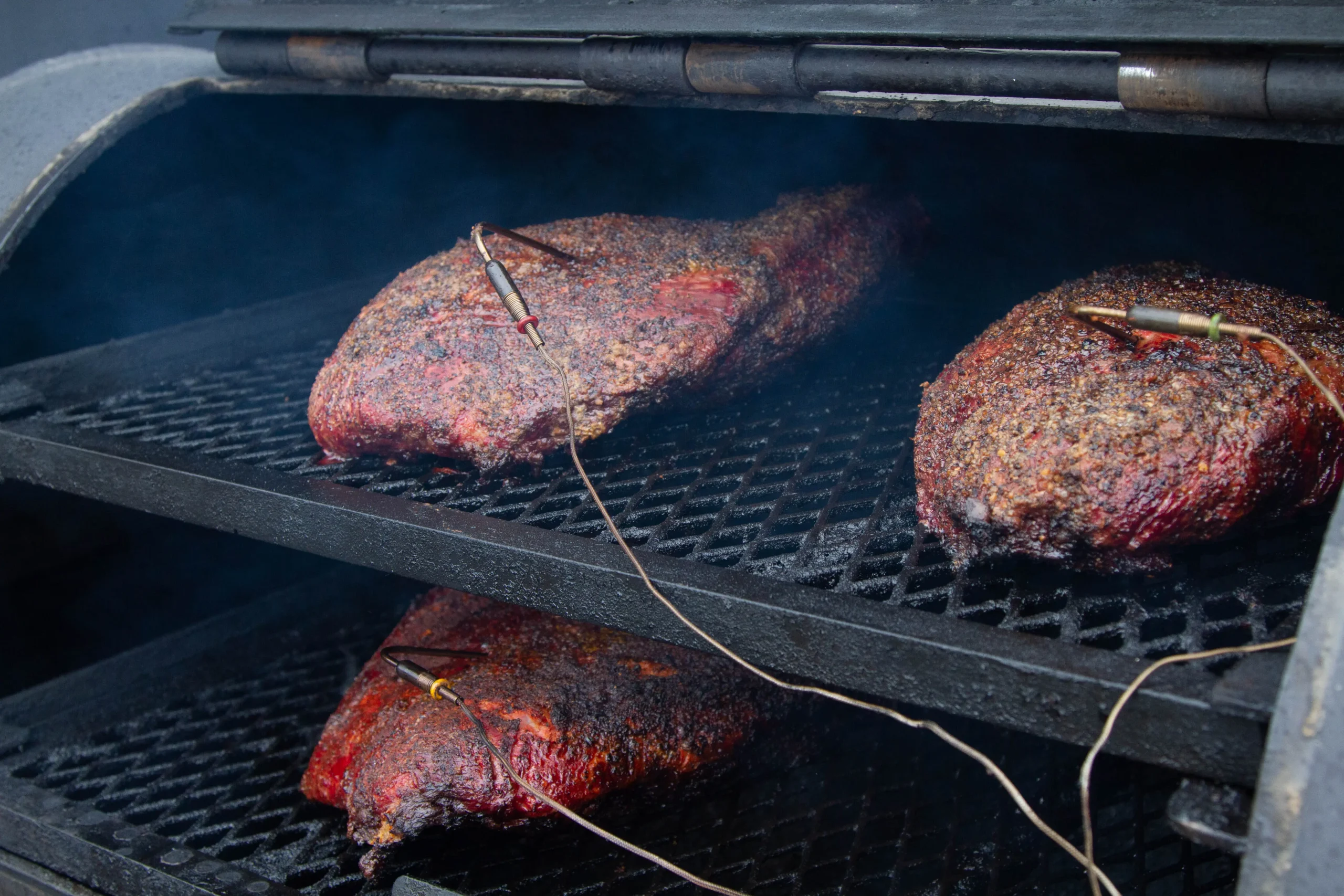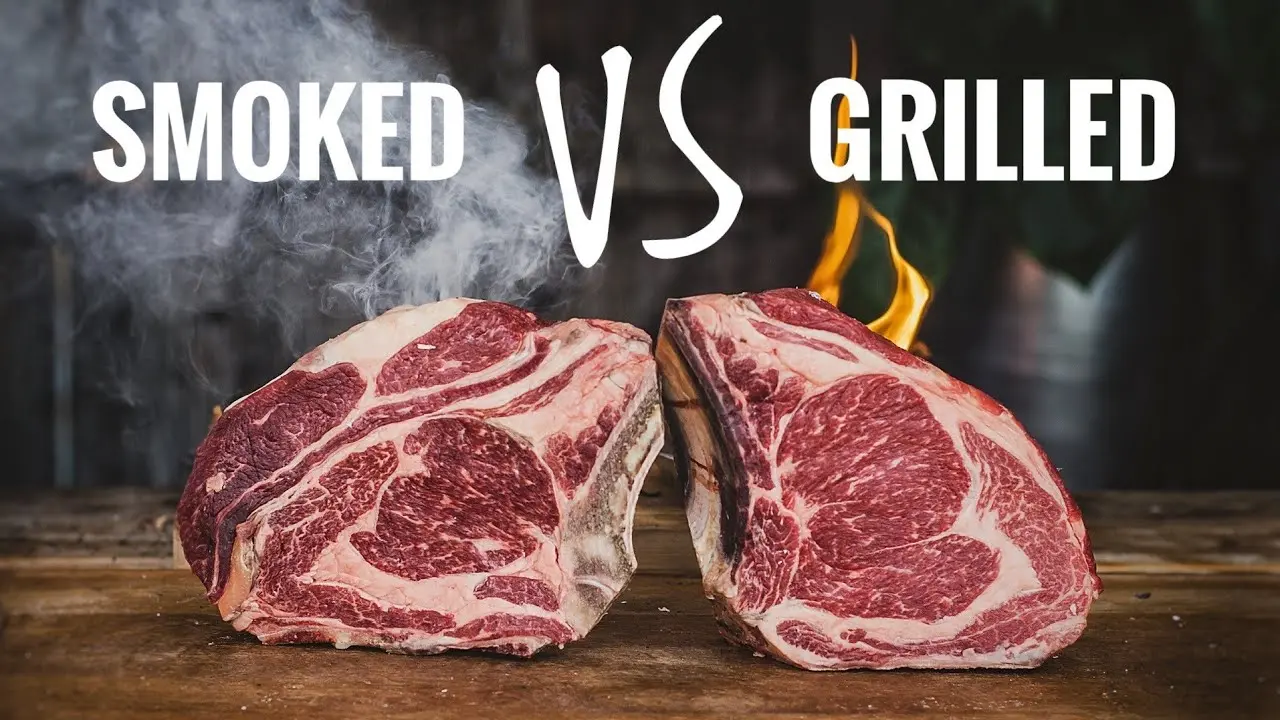When it comes to cooking techniques, grilling and smoking are two popular methods that add unique flavors and textures to food. Whether you're a barbecue enthusiast or just someone who enjoys a good cookout, understanding the difference between grilled and smoked can help you appreciate the culinary magic that happens on the grill. In this article, we'll explore the distinctions between these two techniques and how they can elevate your dining experience.
Grilling: The Sizzle of Direct Heat
Grilling is a cooking method that involves placing food directly over a heat source, typically an open flame or hot coals. This direct heat cooks food quickly, creating a delicious sear on the outside while retaining moisture on the inside. Grilling is known for its high temperatures, which can reach up to 600 degrees Fahrenheit (315 degrees Celsius).
One of the main advantages of grilling is its speed. Whether you're cooking burgers, steaks, or vegetables, grilling allows you to prepare meals in a matter of minutes. The intense heat caramelizes the natural sugars in the food, enhancing its flavor and creating those coveted grill marks.
Another benefit of grilling is the versatility it offers. You can grill a wide variety of foods, from juicy steaks and tender chicken breasts to vibrant veggies and even fruits. The direct heat allows you to control the cooking process, making it easy to achieve your desired level of doneness.
Smoking: Unleashing Flavors with Indirect Heat
Smoking is a cooking technique that involves exposing food to smoke produced by burning wood chips or chunks. Unlike grilling, smoking relies on indirect heat, which means the food is cooked away from the heat source. This slow and low process infuses the food with a delectable smoky flavor and tenderizes it to perfection.
The key to smoking lies in the smoke itself. Different types of wood impart distinct flavors to the food, such as mesquite, hickory, apple, or cherry. This variety allows you to experiment with different combinations and create unique taste profiles. Whether you're smoking beef brisket, pork ribs, or salmon, the smoky aroma and taste will elevate your dish to new heights.
Unlike grilling, smoking requires patience. The low temperature, typically between 200-250 degrees Fahrenheit (95-120 degrees Celsius), means that smoking takes considerably longer than grilling. Depending on the size and type of food, smoking can take several hours, if not overnight.
Can You Grill and Smoke?
Absolutely! In fact, many outdoor cooking enthusiasts combine grilling and smoking to achieve the best of both worlds. This technique, known as grilling with smoke, involves searing the food on high heat and then finishing it off with a smoky flavor.
For example, you can start by grilling a thick steak over direct heat to create a delicious crust. Once the steak is seared, you can transfer it to an indirect heat zone, add some wood chips or chunks to generate smoke, and let it cook slowly until it reaches the desired level of doneness. This combination of grilling and smoking imparts a rich smoky flavor while maintaining the juiciness of the meat.
Can I use any type of wood for smoking?
While you can experiment with different woods, it's essential to choose hardwoods that are suitable for smoking. Woods like oak, hickory, maple, and fruitwoods are commonly used for smoking due to their pleasant flavors. Avoid using softwoods like pine or cedar, as they can release resinous compounds that can ruin the taste of the food.

Can I grill and smoke at the same time?
Yes, many grills and smokers on the market allow you to grill and smoke simultaneously. These versatile units often have separate compartments for grilling and smoking, making it convenient to switch between the two cooking methods.

Are there any health concerns associated with grilling and smoking?
While grilling and smoking can produce delicious results, it's important to be mindful of potential health risks. When grilling, the high heat can create carcinogenic compounds called heterocyclic amines (HCAs) and polycyclic aromatic hydrocarbons (PAHs) in meat. To minimize exposure, consider using marinades, trimming excess fat, and avoiding direct contact between the flames and the food.
Smoking, on the other hand, can introduce harmful chemicals called polycyclic aromatic hydrocarbons (PAHs) into the food. To reduce the risk, choose lean cuts of meat, use a drip pan to catch any fat drippings, and ensure proper ventilation when smoking.
In Conclusion
Grilling and smoking are two distinct cooking techniques that offer unique flavors and experiences. Grilling provides quick and intense heat, perfect for searing and caramelizing food, while smoking offers a slow and low process that infuses the food with smoky goodness. By understanding the differences between these methods, you can take your outdoor cooking skills to the next level and impress your family and friends with mouthwatering dishes.
If you want to know other articles similar to Discovering the difference: grilling vs smoking you can visit the Cooking techniques category.


Related Articles